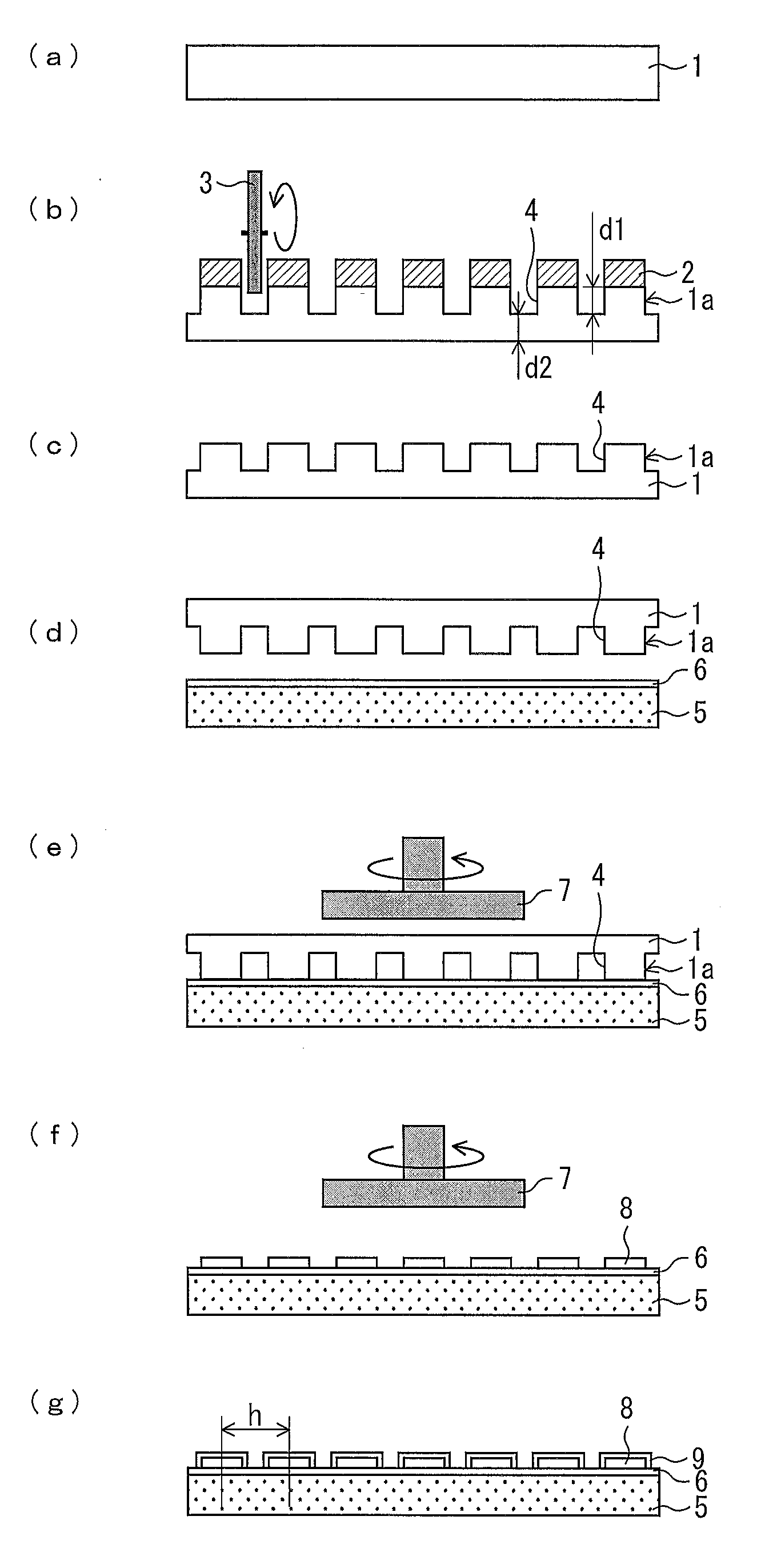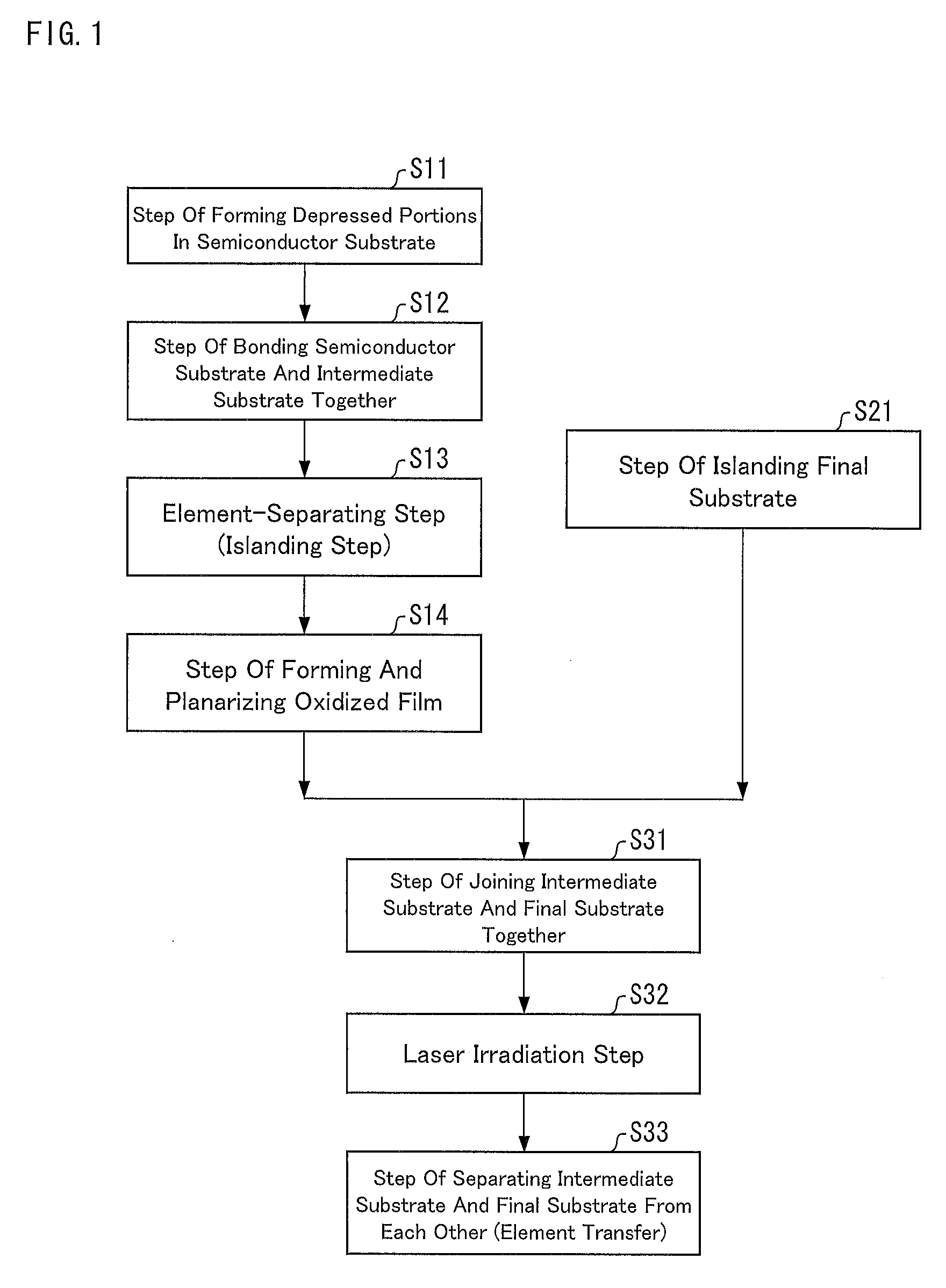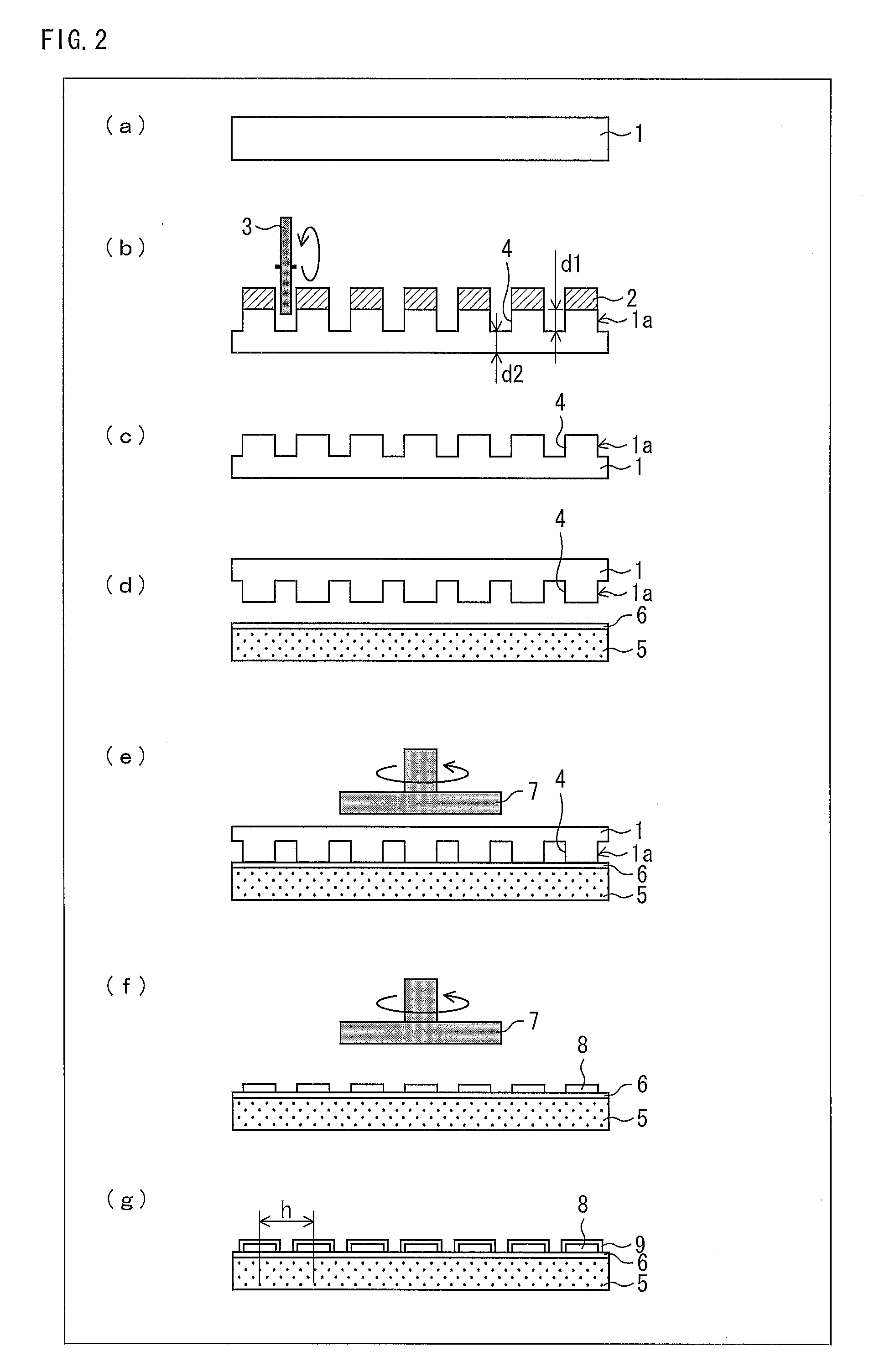Transfer method, method for manufacturing semiconductor device, and semiconductor device
a technology of semiconductor devices and transfer methods, applied in the direction of semiconductor devices, basic electric elements, electrical appliances, etc., can solve the problems of difficult even reduction of manufacturing costs, large initial investment, and inability to achieve desired performance of thin-film transistors, so as to reduce the number of transfers, prevent displacement, and reduce the effect of the number of transfers
- Summary
- Abstract
- Description
- Claims
- Application Information
AI Technical Summary
Benefits of technology
Problems solved by technology
Method used
Image
Examples
embodiment 1
[0132]An embodiment of the present invention is described below with reference to FIGS. 1 through 7.
[0133]A method for manufacturing a semiconductor apparatus according to the present embodiment is a method for manufacturing a semiconductor apparatus by using a so-called device transfer technique for transferring semiconductor elements from a semiconductor substrate serving as a base substrate to a final substrate (final transfer substrate, mounting substrate) on which the semiconductor elements are to be finally mounted.
[0134]The semiconductor substrate may be a substrate (semiconductor wafer) made of a semiconductor material, such as a Si substrate, an SOI (Silicon On Insulator) substrate, a GaN substrate, or a GaAs substrate, for example, or may be a substrate obtained by forming a semiconductor film made of a crystal of Si, GaN, GaAs, or the like on an insulating substrate such as a sapphire substrate.
[0135]Further, examples of the final substrate include insulating substrates s...
embodiment 2
[0253]Another embodiment of the present invention is described below with reference to FIG. 8 through (a) to (c) of FIG. 10.
[0254]FIG. 8 is a flow chart schematically showing main steps of a method for manufacturing a semiconductor apparatus according to the present embodiment. Further, FIG. 9 is a set of cross-sectional views (a) to (f) showing steps from S11 to S13 of FIG. 8 in the order in which they are executed. FIG. 10 is a set of cross-sectional views (a) to (c) showing steps from S31 to S33 of FIG. 8 in the order in which they are executed. The steps shown in S21 of FIG. 8 are identical to the steps shown in S21 of FIG. 1, and the cross-sectional views showing the steps in S21 in the order in which they are executed are identical to (a) to (c) of FIG. 3. Therefore, the steps shown in S21 of FIG. 8 in the order in which they are executed are omitted from the illustrations.
[0255]>
[0256]First, a method for manufacturing a semiconductor apparatus according to the present embodim...
embodiment 3
[0294]Another embodiment of the present invention is described below with reference to FIG. 11 through (a) to (c) of FIG. 13.
[0295]FIG. 11 is a flow chart schematically showing main steps of a method for manufacturing a semiconductor apparatus according to the present embodiment. Further, FIG. 12 is a set of cross-sectional views (a) to (h) showing steps from S41 to S46 of FIG. 11 in the order in which they are executed. FIG. 13 is a set of cross-sectional views (a) to (c) showing steps from S51 to S53 of FIG. 11 in the order in which they are executed. The steps shown in S21 of FIG. 11 are identical to the steps shown in S21 of FIG. 1, and the cross-sectional views showing the steps in S21 in the order in which they are executed are identical to (a) to (c) of FIG. 3. Therefore, the steps shown in S21 of FIG. 11 in the order in which they are executed are omitted from the illustrations.
[0296]>
[0297]First, a method for manufacturing a semiconductor apparatus according to the present ...
PUM
 Login to View More
Login to View More Abstract
Description
Claims
Application Information
 Login to View More
Login to View More - R&D
- Intellectual Property
- Life Sciences
- Materials
- Tech Scout
- Unparalleled Data Quality
- Higher Quality Content
- 60% Fewer Hallucinations
Browse by: Latest US Patents, China's latest patents, Technical Efficacy Thesaurus, Application Domain, Technology Topic, Popular Technical Reports.
© 2025 PatSnap. All rights reserved.Legal|Privacy policy|Modern Slavery Act Transparency Statement|Sitemap|About US| Contact US: help@patsnap.com



